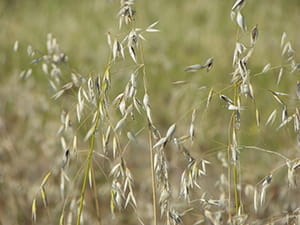REGINA — Herbicidal weed control is a fundamental component of an integrated weed management plan. However, herbicides that were once effective may no longer be as weed populations can become resistant to herbicide groups over time. In the long term, a contraction of herbicidal weed control options may result, which correlates with negative consequences for an operation’s bottom line. So, proactive information regarding herbicide resistance within a target weed population can guide cost-effective decision-making for future herbicide use.
Herbicide resistance was first identified in Canada in 1957 when wild carrot growing in Ontario was found to be resistant to the group 4 phenoxy herbicide, 2,4-D. Since that time, resistant weed populations have become more prevalent. A 2002/03 survey found 10 per cent of Saskatchewan fields had at least one weed that was resistant to herbicides. This rose to 72 per cent in the 2019/20 survey. In total, it has been estimated that weeds with herbicide resistance cost Saskatchewan producers over $400 million annually.
The above increase may be blamed on overuse of herbicides in an integrated weed management plan. However, this may not be the case. It is far more likely that an overuse of a particular herbicide mode of action on a weed population over many years has selected for resistance within that population. For instance, if a population of wild oats was sprayed once per year with a given herbicide group, for a period of 20 years, the possibility exists that the wild oat population would be controlled with no issues whatsoever. Yet there is also the possibility that at some point, a few wild oat plants were not controlled, as genetic mutations constantly occur, and some of those may lead to resistance. So, if the plants surviving the herbicide application set seed and grow up the next year, the HR-genotype becomes more prevalent, and if the selection pressure (from consistently using the same herbicide group) remains the same through time, eventually the herbicide resistance-genotype becomes the most prevalent in the population.
Many companies offer strategies to combat this from occurring, which may include new modes of action or products that include multiple modes of action under a single label. At times, these are an attractive solution for producers, while others may be hesitant to use the products over cost concerns.
While herbicide resistance in weeds is a risk many producers face, the risk severity may be reduced. The Saskatchewan Crop Protection Lab can test weed populations for herbicide resistance, which may assist in future rotation planning and guidance in making informed decisions when purchasing herbicides. If you suspect you have some herbicide-resistant weeds, or if you are considering using different modes of action in the future, submit a weed seed sample today and have it tested for the herbicide modes of action you are considering – informed decisions will lead to better, more cost-effective management options.
— James Bush, M.Sc., AAg, is manager of the Crop Protection Lab, Crops and Irrigation Branch, Regina
Bookmark SASKTODAY.ca, Saskatchewan's home page, at this link.

